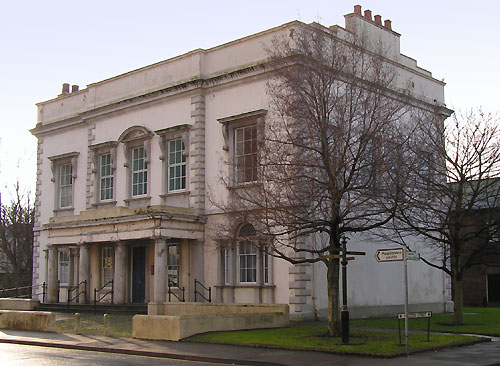
Duke Street in Whitehaven runs parallel to Lowther Street all the way from the harbour to the top of Catherine Street. It crosses Church Street, Queen Street and Scotch Street and passes the end of Strand Street, Tangier Street and King Street. The name dates back to around 1687 in the time of Sir John Lowther but the route had existed considerably longer as this was the route to Egremont via Hensingham. The road originally took the path of Love Lane around the back of The Flatt which was later to be known as Whitehaven Castle. A beck that ran from Corkicle down Duke Street to the harbour was open at the end of King Street where a bridge allowed a crossing to what is now Tangier Street. By 1693 this beck had so hollowed the highway that it was impassable by carts. However, this remained the main road until the mid-1700's when the end was blocked off at the castle grounds and Lowther Street extended along Flatt Walks to Hensingham.

Once known as the Cupola this was one of the most magnificent houses in Whitehaven and is featured prominently on Matthias Reads "Birds Eye View of Whitehaven". It was built around 1710 at an estimated cost of £2400 by a wealthy merchant called William Feryes who moved from an existing house on King Street. He was one of the original board of Trustees that controlled the town and had also became part of the wealthy and influential Gale family with his marriage to Mehetabel, daughter of John Gayle of Whitehaven. Unfortunately he died almost as soon as it was completed in August 1710. It was later owned by John Gale.
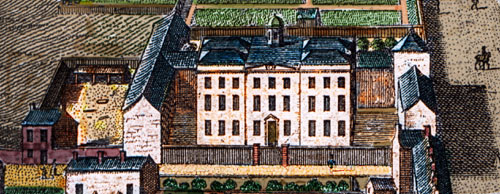
It is shown on the painting as being 3 storeys high with additional basement and surrounded on three sides by warehouses with a garden at the back. This shows the tendency of Whitehaven merchants at the time to keep their business at home. The roof had four separate pitched and slated sections each with two chimney stacks surrounding a large central domed bell tower from which the property got its name. The current building is far less impressive having been greatly modified by William Barnes in 1851 after it had been purchased by the Town's trustees to become the Whitehaven Town Hall.
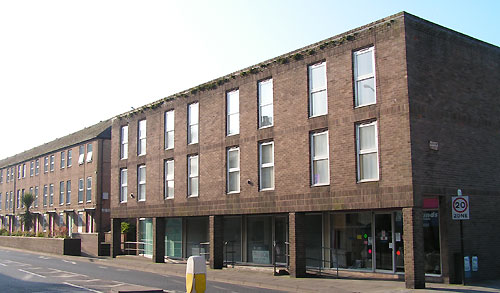
These flats were built with the idea of keeping accommodation within the town centre yet with modern retail provision on the ground floor. Unfortunately, these shops are disconnected from the rest of the town's businesses and have always struggled to attract any business. The building, though thankfully not out of scale with the rest of the town, hardly complements the historical Georgian centre. The block beyond is purely accommodation and with its pitched roof sits a bit more comfortably in its historic surroundings.
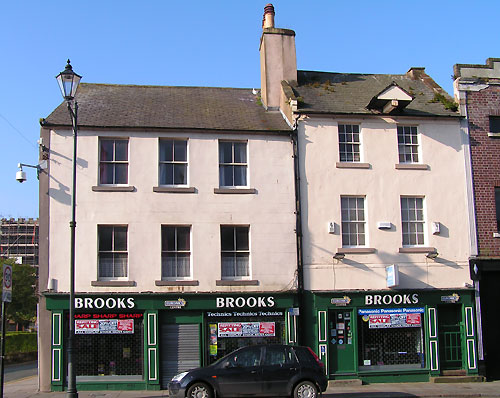
Brooks is a long standing local business in the heart of Whitehaven. It was opened as Central Music Stores in 1922 by Richard Laurie Brooks. Once selling musical instruments, sheet music, 78 records and the gramophones on which to play them, it now concentrates on the latest domestic technology. This shows the need for such businesses to adapt with the times. Notice how the right-hand building still has the beam for a hoist projecting from the roof. This would have been handy because before Brooks expanded, it was Jackson and Murray's Auction Mart who had regular furniture sales. The hoist may have just been used to help lift furniture onto carts for delivery.
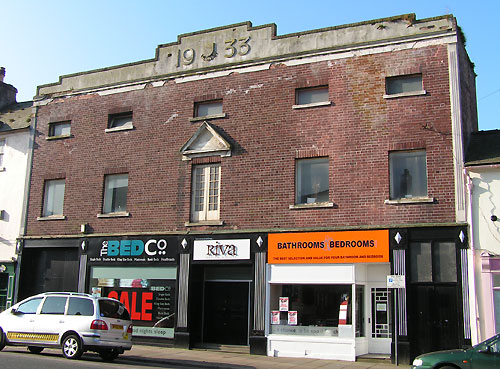
The next building is a bit of a surprise - like a piece of Americana on the Cumbrian coast. As can be seen on the facade it was built in 1933 and was the Empress Ballroom. Downstairs was a roller-skating rink which, when that fad passed, was later used as an auction rooms . The Empress Ballroom was the hip place to be in that it catered for modern dancing whilst the old time dances were held at the Odd Fellows hall. It also provided a venue for some top artists and the tour dates for top American pop stars Brenda Lee and Gene Vincent in 1962 included this location for their Whitehaven stop.
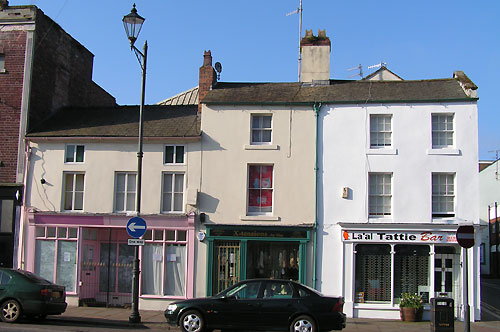
On the corner of Duke Street and New Street the La'al Tattie bar was for many years Hal Purves camera shop in the days when cameras used something called film. These houses date from the end of the 17th century when the site was owned by William Hutton a barber.
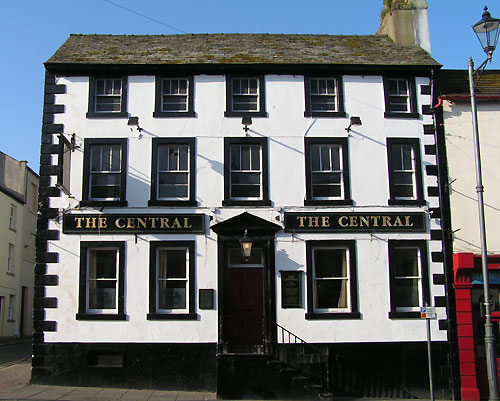
On the other corner we have The Central public house. A typical Whitehaven mid 18th century building that has had subsequent alteration including an unusual glazing configuration on the upper storeys, with traditional sash windows but featuring 3 vertical panes over 2 horizontal ones. Although at first it appears symmetrical about the central doorway the windows on the far right are more narrow than the rest. The building now extends back into the last building on New Street and was owned back in 1762 by a mariner called Anthony Piper.
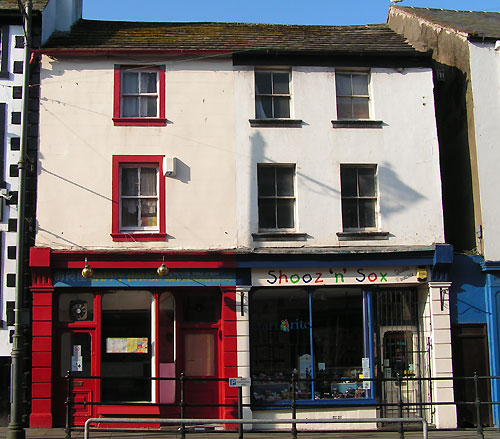
This is followed by a couple of small shops occupying two modest sized old houses.
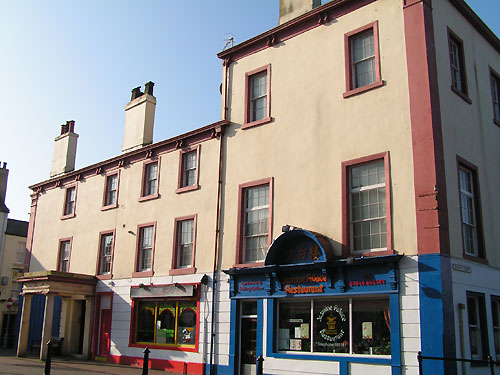
Another view of what was the Globe Hotel featured on the King Street page and the building on the corner of Strand Street now the Jasmine Palace restaurant.
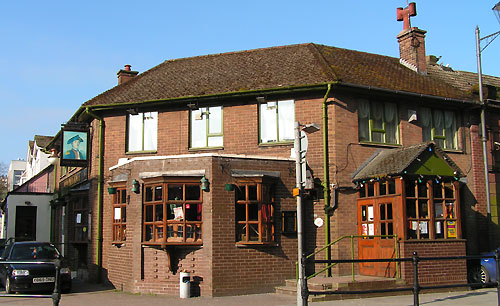
The John Paul Jones tavern on the corner of Strand Street and Duke Street cashes in on the famous American naval hero's connections with Whitehaven. Though a modern building in brick some ship style wooden windows have added to the theme and the general layout of the building allows it to sit quite well on this prominent corner. Before the Paul Jones the site was occupied by the Wheatsheaf hotel.
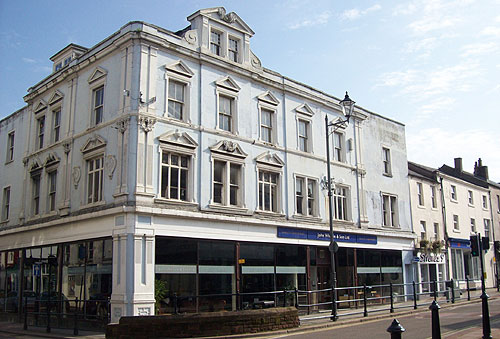
Whittles furniture store on the corner of Tangier Street is done in the more decorous Whitehaven Italianate style although at the far end can be seen the more plain style. This was in the mid 19th century
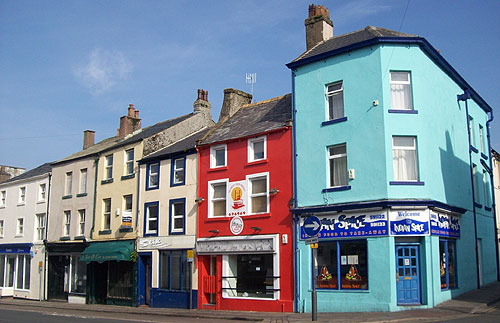
This group of shops on Duke Street shows how the basic Whitehaven style leads to individuality and how colour can be used to brighten up the street.
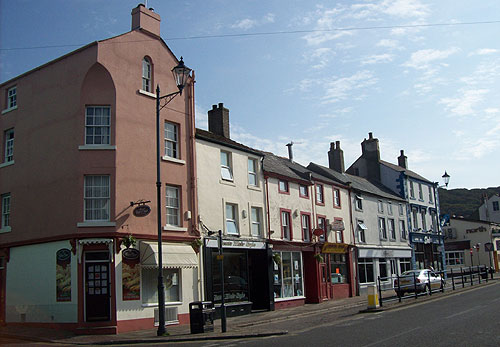
Another building with a corner entrance which is taller featuring 4 storeys and with the gable end facing the main street makes an interesting start to this next block of shops.
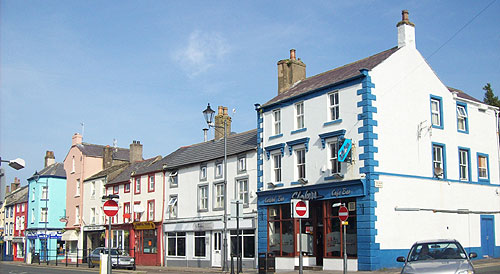
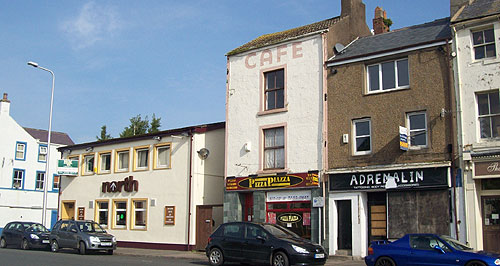
North the pub on the corner was of course for many years known as The Dolphin and despite being only two storeys and of modern construction doesn't appear too disruptive to the street. Before the Dolphin was built the corner was occupied by the Sun Inn in a much older building with a corner doorway.
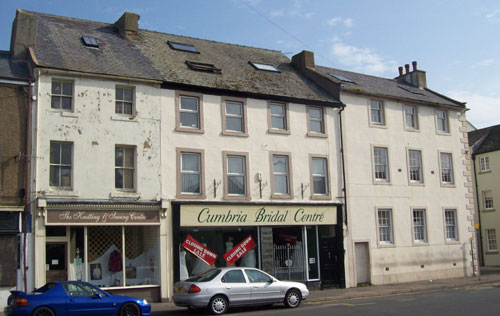
The house on the corner of Queen Street is characteristic of Whitehaven by having the door around the side on Queen Street thus allowing the front room to have uninterrupted windows on the main street frontage.
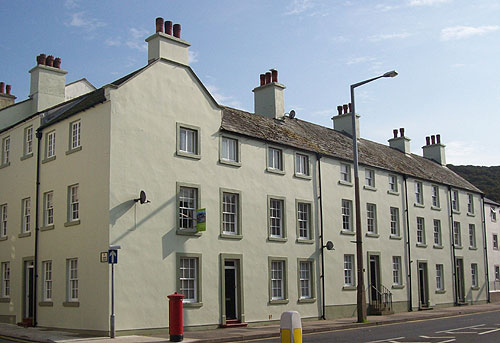
These rebuilt houses have done a great job of preserving the character of this part of town.
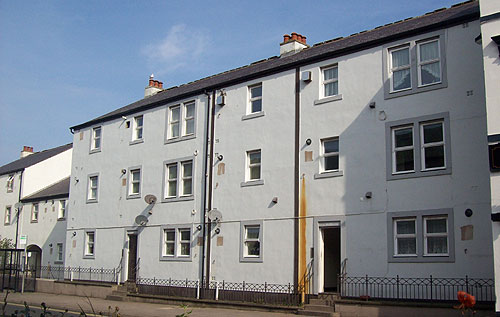
The modern flats further along have tried to emulate the Georgian style and are certainly more in keeping with the town than those across the road with their attractive railings at the front. However, the window proportions seem a bit mean and the rendered fronts have been disrupted by numerous central heating boiler vents and satellite dishes.
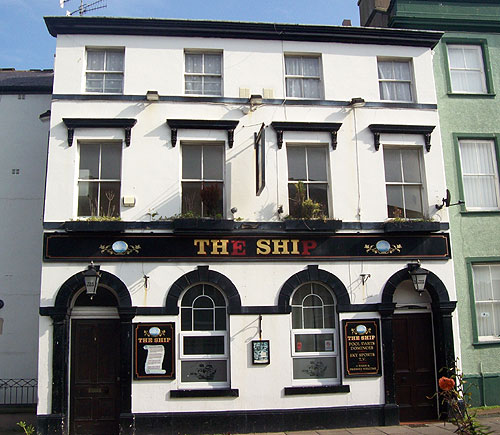
The Ship in on Duke Street is just one of many pubs that used to have that name in Whitehaven which must have led to some confusion. It has a nice symmetry with the arched doors at either end separated by two arched windows.
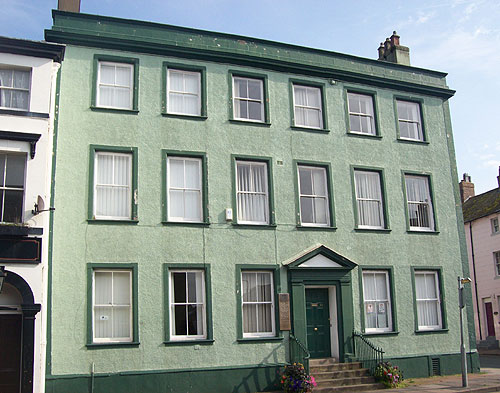
This Georgian facade of Brockbank-Tyson solicitors is so elegant they use it as a logo on their headed paper. It was built in the 1740's by Peter Gale and modified early in the following century. Previously there had been a thatched cottage on the site - indicating how far Whitehaven had developed in less than a hundred years. In fact, in "The Bird's Eye View", painted just a few years before, most of this block was just gardens.
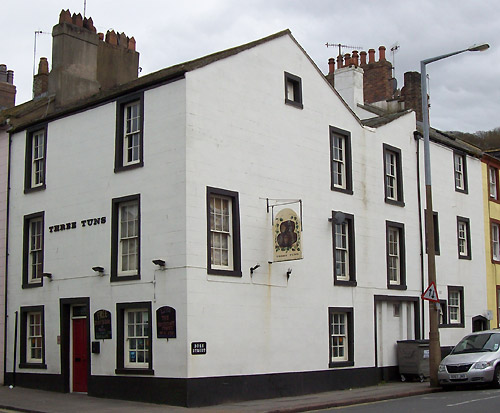
The Three Tuns on the corner of Scotch Street and Duke Street occupies a very traditional Whitehaven building but was famous in the 1970's as a bikers pub with usually about a dozen high powered motorcycles parked outside. The Tuns in the title refer to the name of a large barrel or the measure that barrel holds.
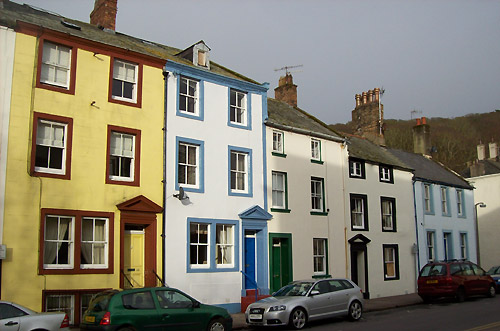
It is interesting how these houses on Duke Street appear to become smaller as they move away from the centre of town with the final one on the corner of Michael Street is only of two storeys.
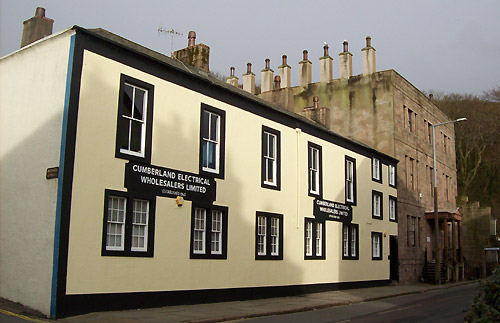
The recently re-painted electrical wholesalers was for many years the colliery office. There is a similar two storey building on the engraving of Read's painting of the 1730's annotated as Sir James Lowthers Alms Houses for poor Colliers and their Widows. The house on the end which appears cut into this building is called Somerset House and described on Catherine Street down which it looks.
© WAWL 2009